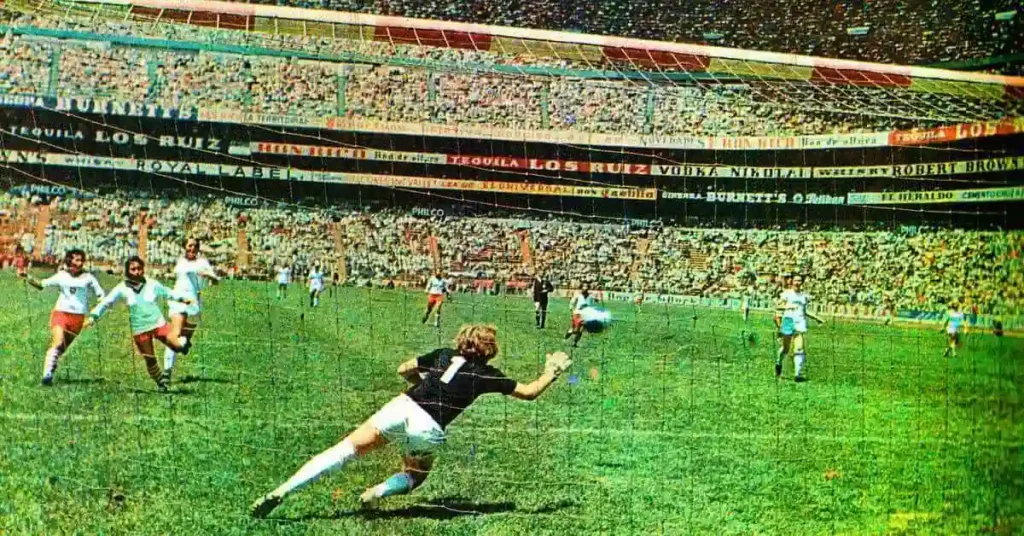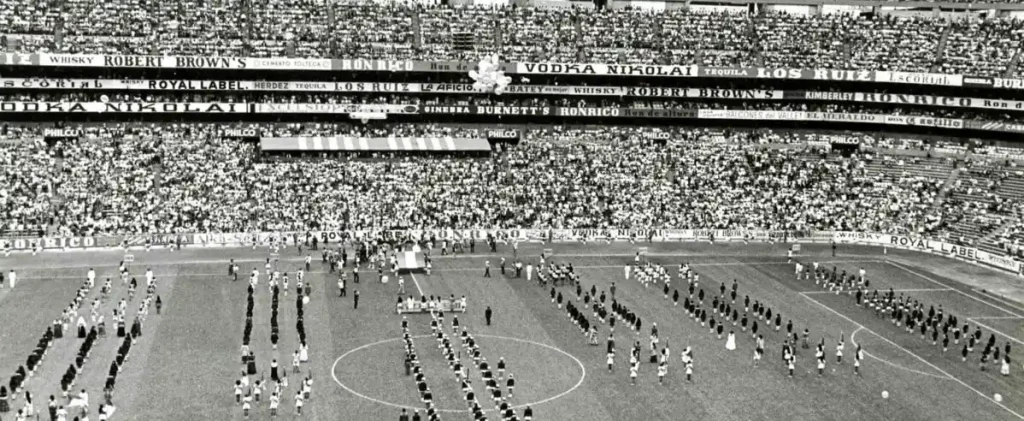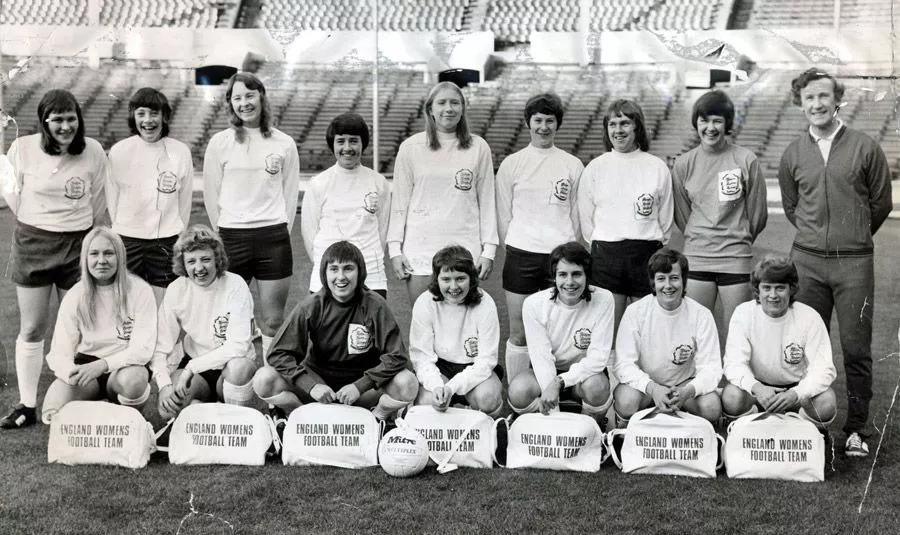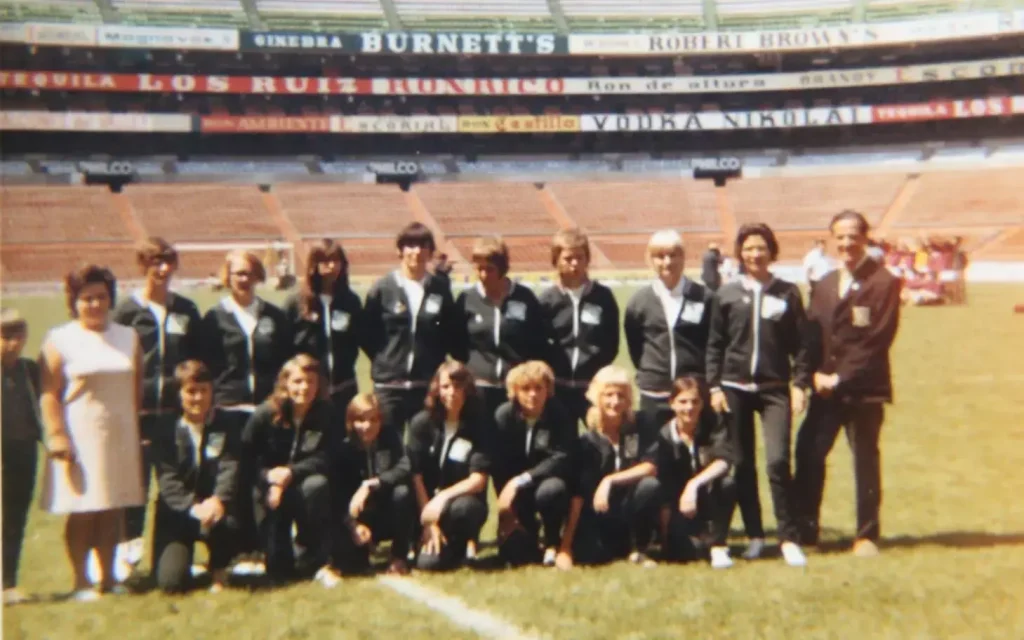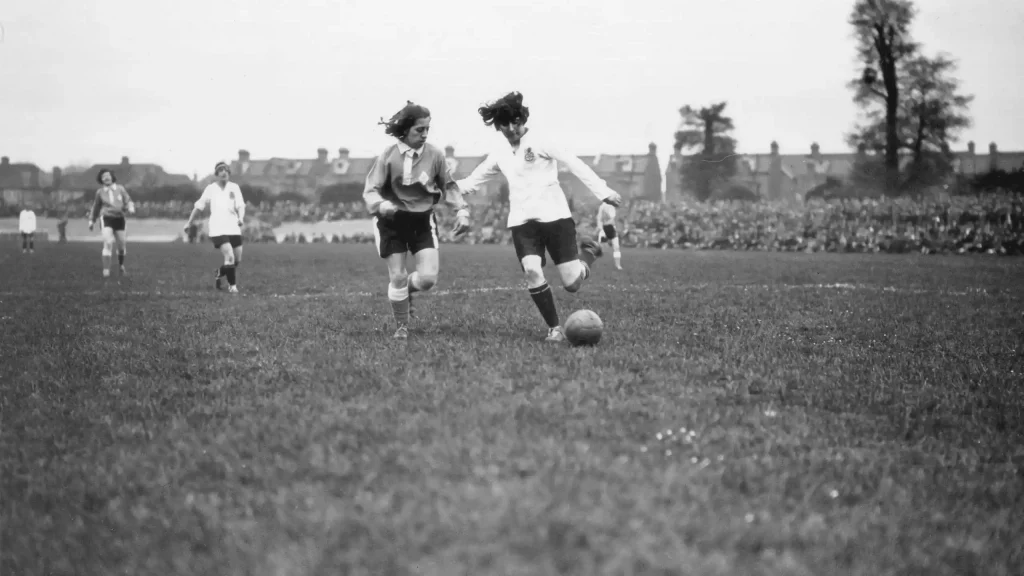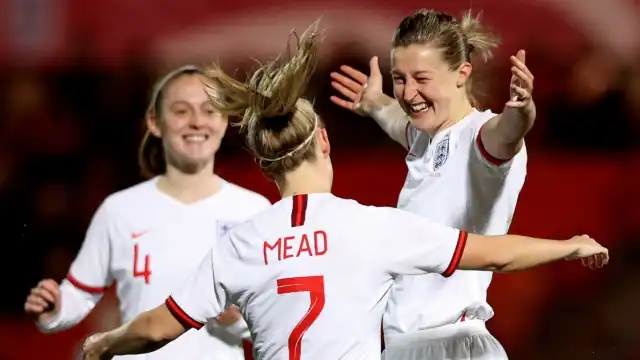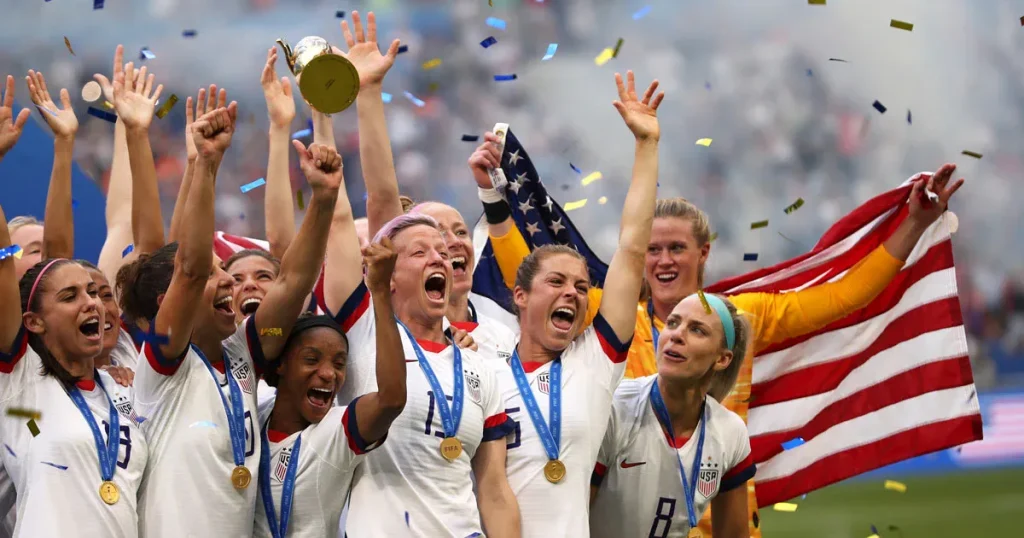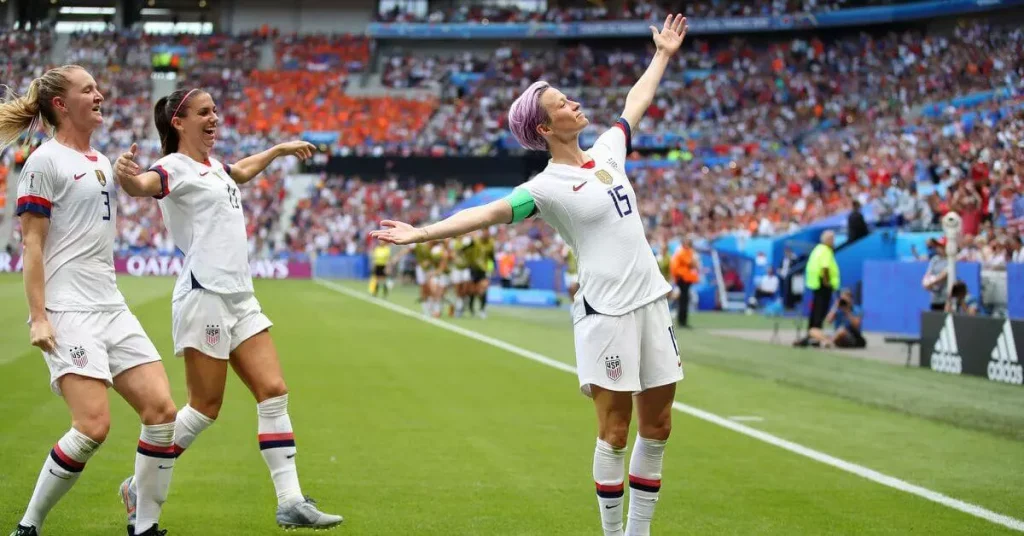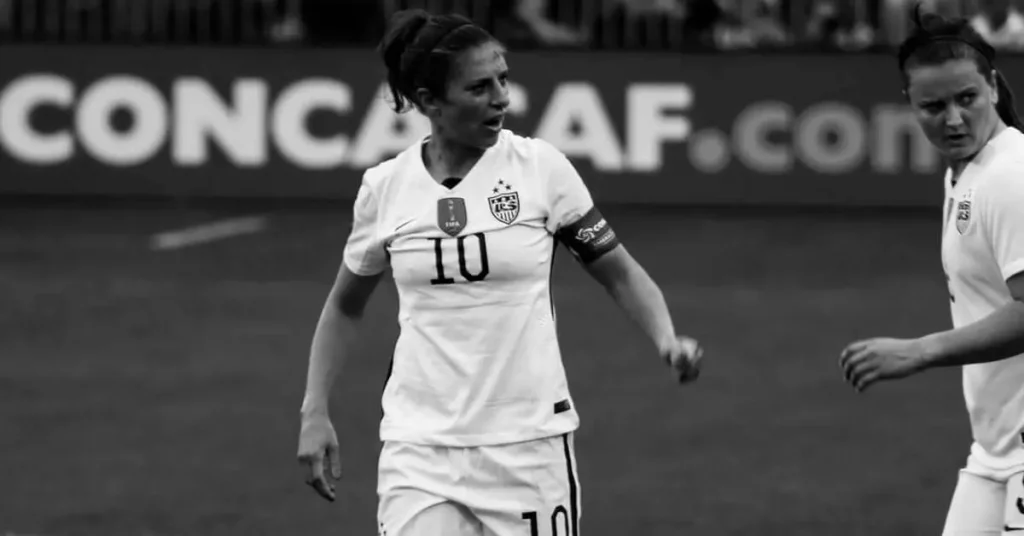In 1971, an England women’s soccer team played in front of almost 100,000 fans at Mexico City’s Estadio Azteca. Yet, the match does not appear in any official records. Thus, England’s participation in what was considered at the time as the second women’s ‘World Cup’ is primarily forgotten 50 years later.
The ‘hidden’ history of England’s women’s national football team participating in this tournament derives from the fact that it is not considered official by FIFA or any of the national governing bodies of the participant nations.
Women’s soccer has been present historically in many countries. Still, the impact of the 1966 World Cup tournament, which was televised throughout the world, combined with the desire of women to be empowered, and refusing to accept male restrictions on their activities, led to a worldwide expansion of the women’s game in the second half of the 1960s.
Alternative Bodies
As FIFA refused to recognize women’s soccer, alternative organizing bodies were formed. Some of which later merged into the existing official bodies. In Mexico, the AMFF organized a 17-team league for clubs around Mexico City.
The Women’s Football Association was established in November 1969, independent from the male Football Association in England. In Italy, there were three separate bodies claiming jurisdiction of the women’s game for a while.
The first international body overseeing women’s football in the modern era appears to have been the Asian Ladies’ Football Conference, formed in 1968 with representatives from Hong Kong, Malaysia, Singapore, and Taiwan.
In Europe, the vacuum created by UEFA’s absence was filled by the Fédération Internationale de Football et Européenne Féminin (FIEFF) established in Italy early in 1970.
FIEFF was based in Italy and dominated by Italian interests. The founding congress was attended by representatives from Austria, England, Mexico, Switzerland, and West Germany. It is not clear who attended on behalf of England.
Following the congress, a ‘World Cup‘ was held in Italy in July 1970. There were seven entries (Czechoslovakia had been due to take part but withdrew) comprising a mixture of national organizations, individual clubs, and private bodies.
The independent English team, selected by Harry Batt of the Chiltern Valley Club, was defeated by Mexico in the third place play-off match. The team’s core was drawn from Chiltern Valley. In addition, there were several ‘guest’ players, although who exactly participated is unclear.
1971 World Cup
FIEFF organized a second ‘World Cup’ tournament in the summer of 1971. Pre-tournament publicity suggests there was an intention to sexualize the event. A report in the New York Times described the World Cup tournament as “a mixture of sports event and a beauty contest.”
Goalposts would be pink. The teams would wear brightly colored outfits, and the shorts will be as close as possible to hot pants. Beauty salons would be installed in the dressing rooms for women to prepare themselves for post-match interviews.
These proposals did not seem to have been acted upon and may have represented the views of any individual member of the organizing committee. Matches were well-publicized in the Mexican press.
The photographs show no sign of pink goalposts or hot pants. More noticeable is the evidence of brutality. A picture of the group match between Italy and France shows Elena Schiavo (Italy) delivering a classic right hook to her opponent’s jaw, Jocelyne Henry (France).
Injuries decimated the England women’s soccer team that they had to borrow players to complete their final fixture.
The ‘World Cup Women’s Soccer Tournament‘ was divided into two phases.
The finals follow a qualifying phase. Scotland had considered entering a team and played a trial game against England before deciding against the move. Then, in 1970, the England women’s soccer team was selected by Harry Batt, manager of the Chiltern Valley Ladies team.
Harry Batt And Pat Dunn
Batt, employed as a timekeeper in a Luton factory, was a driving force behind the East Midlands Ladies Football Alliance and was effectively self-appointed as manager, selector, and organizer.
The core of players came from his club, a team that had progressed no further than the last 16 of the inaugural WFA Cup (known as The Mitre Trophy) in 1970-71.
Batt’s primary ally in the venture was Pat Dunn, the first president of the Women’s Football Association and a FA qualified referee.
In the qualifying round, England women’s soccer team had mixed fortunes in Italy, losing 7-0 to Italy in Trapani and beating Austria 3-0 in Syracusa.
The England women’s football team comprised 15 players plus Harry Batt and his wife June (as manager and assistant-manager), Pat Dunn (as ‘chaperone’ and trainer), and a referee, D Cave of Luton.
Nine of the players were attached to Chiltern Valley, with the youngest said to be 16 and the oldest 24. The team traveled to New York, where they played exhibition games, and then to Mexico, where they spent two weeks.
England Women’s Soccer Team Draw
Although this was not an official women’s national team and did not have authorization from the WFA, they were referred to as ‘Inglaterra’ by the Mexican press. England was drawn in a group with Argentina and Mexico, and their young and inexperienced players were no match for their opponents.
As most matches were played at the weekend, they had the misfortune to play their two group games on consecutive days. On both occasions, they received a physical battering.
The first game was held on Saturday 21 August 1971 against Argentina. Although Janice Barton equalized an early Argentine goal, the team collapsed, going down 4-1.
The England women’s soccer team line-up was: L Harris; CA Wilson, V Cheshire, T McCaffery, J Stockley; J Breckon, P Rayner, L Caleb; C Lockwood, J Barton, L Cross; Sub G Sayell for Rayner. The game, which took place at the Estadio Jalisco in Guadalajara, was watched by 20,000 fans.
Rough Play
On her return with the England team, assistant manager Pat Dunn was quoted as saying: “It was rough … It was their way of playing football – Latin-American style. They kicked over the top of the ball; they tripped, fouled, grabbed, and tugged. If a player went by them, they immediately pulled on your shirt.”
With only 24 hours before the second fixture, there was little time for England’s battered and bruised players to recover. There were further injury problems in the second group game against Mexico at the Estadio Azteca in Mexico City.
The game was watched by close on 100,000 fans, and England lined up with a couple of team changes: L Harris; J Stockley, V Cheshire, J Breckon, CA Wilson; T McCaffery, L Caleb, L Cross; J Barton, P Rayner, Y Farr; Subs: M Collins (for McCaffery), C Lockwood (for Farr).
They faced another bruising encounter. England women’s team manager Harry Batt was quoted as saying, “Our dressing-room was like a battlefield. There were men in white coats everywhere administering oxygen and bandaging the walking wounded.”
Two players (Carol Ann Wilson and Yvonne Farr) suffered hairline leg fractures. Several other players required medical treatment afterward. Not surprisingly, England was hammered 4-0.
Fifth Place Play-Off
Although there was a break of a further week before the play-off for fifth and sixth places against France, the England squad was only able to field an entire squad by borrowing four locally-based players.
The match was played at the Estadio Azteca in Mexico City as the warm-up match before the semi-final between Italy and Argentina. This game was a more even affair.
For once, England got off to a good start, taking the lead on two occasions before eventually going down 3-2. Both England goals came from Janice Barton. On his return to England, manager Harry Batt played down the violence of the group games.
The Women’s Football Association had not supported the venture. Immediately before the team’s departure, all those involved in the traveling party were suspended or expelled by the WFA.
Pat Dunn was highly critical of the WFA on her return: “Any organization that denies to the women of Britain the opportunities that we have had presented to us over the past five weeks must be mad.”
The British FIEFF
Shortly afterward, it was announced that the East Midlands Ladies Football Alliance clubs, led by Chiltern Valley, had formed the British Section of FIEFF.
Harry Batt was the president of the new organization. A fundraising match was held at Biggleswade Town FC between the England women’s soccer team (primarily made up of the squad that had traveled to Mexico) and ‘Northampton Ladies’ (an East Midlands Alliance select team).
Great Britain won 8-1, the goals including a hat trick by 14-year- old Cecelia Gallegos. Cecelia had accompanied Harry Batts on their return to England, apparently to spend time here improving her English language skills. Having formed the British Section of FIEFF, the East Midlands Alliance clubs carried on playing.
More importantly, both FIFA and UEFA were alarmed at the ‘World Cup’ financial success. By the end of 1971, UEFA passed a resolution recommending that member associations control women’s football and integrate it into their existing structures. However, not all followed suit immediately.
For example, the WFA did not fall under the control of the FA until 1986. This effectively proved to be the death knell of FIEFF, and it was disbanded in 1972.
World Recognition
This marked the end of involvement in the administration of women’s football by Harry and June Batt. However, Pat Dunn, who was already a qualified referee, continued in this role.
In 1976 Dunn created history when she became the first woman referee to take charge of a male competitive match, officiating in the Dorset County Sunday League fixture between East Lulworth and Freewheelers.
The 1971 ‘Womens World Cup’ tournament demonstrates the lack of vision of FIFA and the male national associations. Nevertheless, the success of the venture, even though it was unofficial, prompted action. Within 12 months, women’s soccer received official recognition.
England Women’s Soccer Team Progress
Since 1993, the English women’s soccer team has been administered by the FA, having previously been governed by the Women’s Football Association (WFA). [1]
The Women’s Football Association tasked Eric Worthington with the task of assembling an official women’s national team, and England played its first international match in November 1972 against Scotland. [2] The team won 3–2 after falling behind by two goals.
The English have qualified for five FIFA Women’s World Cups. The England team reached the quarterfinals three times, losing to Germany in 1995, the United States in 2007, and France on penalties in 2011. [3]
In 2015, they finished third, and in 2019, they finished fourth. The England women’s national football team reached the final of the UEFA Women’s Championship in 1984 and 2009 but lost both times. In 2022, they won the UEFA title for the first time. [4]
The Lionesses
Known as “The Three Lionesses,” they do not compete in the Olympics since England is a member of the British Olympic Association which consists of all home nations combined.
In the UK, there are almost three million women who play football. The game has now surpassed netball as the most popular women’s team sport in England. With the addition of U17, U19, U20, and U23 teams, the English women’s soccer team is now represented at four age levels.
Dutch coach Sarina Wiegman is now in charge of the England women’s national football team. She is the proud coach for winning the Euro 2022 championships and qualifying for the 2023 World Cup.
We can thank the independent English team today for pushing the women’s game forward in 1971, as women’s soccer has made giant strides since then.
References:
[1], [2], [3], and [4]: https://en.m.wikipedia.org/wiki/England_women’s_national_football_team
Images:
https://www.bbc.co.uk/sport/extra/LNoYd7se8m/the-lost-lionesses (main image)
Monty Fresco / Daily Mail
Gill Sayell
